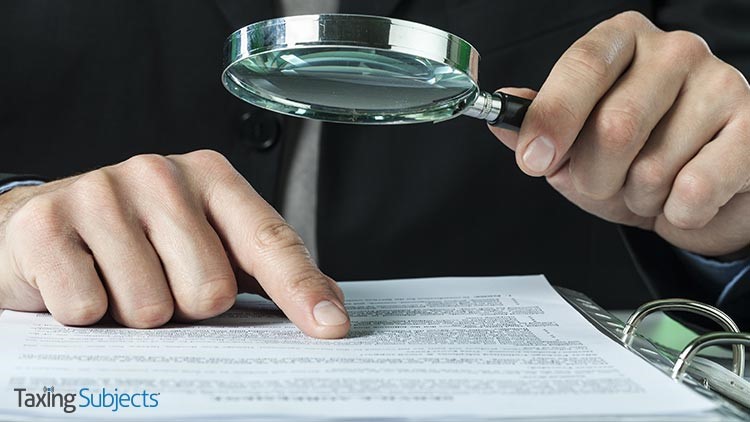by Socheata Ten EA, LLC | Jun 4, 2020 | Tax Tips and News
The Internal Revenue Service recently announced more than two dozen upcoming webinars that will replace the in-person IRS Nationwide Tax Forum events. Since the tax industry has become accustomed to making its way to host cities for the past 30 years, we wanted to see what tax pros thought about the change.
To find out, we posed a question to Facebook:
Disappointed there won’t be in-person IRS forums this year?
Plan to attend a webinar?
Let us know in the comments.
Replies ranged from gutted to optimistic, but the majority of our extremely small sample size—12 comments in total—were predictably somewhere in the middle.
Did tax professionals like the Tax Forums changing to a webinar format?
Many tax pros seemed interested in attending the upcoming Tax Forum webinars. “I’ve never attended in person because I can’t justify the cost (travel costs are too high), so I’d be interested the online series,” began one reply before asking about the logistics of the new online program. “I hope, though, that they can give us the agenda before the discount period ends! What are the exact days and times? What are the topics? If it’s going to be spread out over 4 weeks I need to be able to mark my calendar accordingly.”
While some promised to “be online taking notes” or hoped they could “learn more than in class,” others were sad to miss out on a Tax Forum tradition: “I will miss stopping by the Drake booth and picking up this year’s pen!” Obviously, not everyone is happy about the latest change forced on the tax industry by social distancing requirements.
According to one respondent, the IRS made a hasty decision when it canceled in-person events for the rest of 2020: “I am upset at this. I had registered for Orlando—this is all too much this early.” Another mourned her tax office’s summer plans: “Geeze … there goes our girls vacation!”
How do I sign up for an IRS National Tax Forums webinar?
Tax professionals can get more information and sign up for IRS National Tax Forum webinars on IRSTaxForum.com. Conveniently, the IRS said that those who registered for in-person webinars can either “transfer their registration to the virtual format at no additional cost” or simply get a refund. Those who want to attend one of the webinars can take advantage of “Early Bird” pricing:
- $240 per person before June 15 at 5:00 p.m. EST
- $289 per person from June 16 onward
The agency also noted that there is an additional $10 discount for members of certain industry organizations who sign up by the June 15 deadline:
- American Bar Association (ABA) Section of Taxation
- American Institute of Certified Public Accountants (AICPA)
- National Association of Enrolled Agents (NAEA)
- National Association of Tax Professionals (NATP)
- National Society of Accountants (NSA)
- National Society of Tax Professionals (NSTP)
- Low Income Taxpayer Clinics (LITC)
- Volunteer Income Tax Assistance Program (VITA)
Remember, the first event will be held from July 21 through August 20, and webinars will be live streamed on Tuesdays, Wednesdays, and Thursdays during that four-week period.
What do you think about the IRS National Tax Forums going virtual? Let us know in the comments!
Sources: IR-2020-100; The Drake Software Facebook Page
– Story provided by TaxingSubjects.com
by Socheata Ten EA, LLC | Jun 3, 2020 | Tax Tips and News
A new audit says the Internal Revenue Service hasn’t been doing enough to collect taxes owed by the wealthiest group of taxpayers. As a consequence, the billions of dollars they owe have gone uncollected.
The audit was done by the Treasury Inspector General for Tax Administration (TIGTA) because previous audits had shown “serious lapses” in the IRS approach to nonfilers. This audit looked specifically at whether the IRS is effectively addressing high-income nonfilers and if the agency’s new nonfiler strategy includes wealthy nonfilers.
All this is important because nonfilers of all income levels mean higher taxes for those of us who do file. This passage in the TIGTA report tries to put it into perspective: “The gross Tax Gap is the estimated difference between the amount of tax that taxpayers should pay and the amount paid voluntarily and on time. The average annual gross Tax Gap is estimated to be $441 billion for Tax Years 2011 through 2013, and approximately $39 billion (9%) is due to nonfilers, taxpayers who do not timely file a required tax return and timely pay the tax due for such delinquent returns.”
The IRS admits that high-income nonfilers, while being fewer in number, contribute to the majority of the nonfiler Tax Gap.
What did the audit find?
The Inspector General’s audit looked at the inventory of nonfilers for tax years 2014 through 2016. The study identified over 879,000 high-income nonfilers—those who made more than $100,000 per year—who didn’t satisfy their filing requirements. Added together these nonfilers owed $45.7 billion.
Of the 879,000 nonfilers identified, the audit says the IRS didn’t work on 369,180 of the cases, which carried a cumulative value of nearly $21 billion. Of those 369,180 cases, most of them—326,579—were not put into inventory so they could be worked on by the IRS. More than 42,000 cases were taken out of inventory without ever being worked.
The remaining 510,235 high-income nonfiler cases are still sitting in the IRS inventory, but likely will not be worked due to declining IRS resources. The agency has already removed more than 37,000 high-income nonfiler cases from its inventory, leaving $3.2 billion in owed taxes uncollected.
What are TIGTA’s recommendations?
While the IRS has a new nonfiler strategy that appears to take a more strategic view of nonfiling, the strategy has yet to be implemented by the agency and is still in testing.
The audit report also finds fault with IRS policy that allows high-income nonfilers to slip through the cracks.
“Due to the policy on working single tax year cases without regard to how many returns have not been filed by a taxpayer, the IRS is missing out on opportunities to bring repeat high-income nonfilers back into compliance.
The audit makes seven recommendations, including:
- Designate a senior management official with appropriate resources and specific nonfiler duties to address nonfilers;
- Not pausing the nonfiler program;
- Working multiple tax year cases;
- Not removing high-income nonfiler cases from the inventory without resolution.
The IRS disagreed with putting the nonfiler program under its own management structure, but partially agreed with four recommendations and fully agreed to two others.
– Story provided by TaxingSubjects.com
by Socheata Ten EA, LLC | Jun 2, 2020 | Tax Tips and News
The Internal Revenue Service and the Treasury Department have issued proposed regulations to help businesses navigate new carbon capture credits.
The proposed regulations provide guidance on two new credits for carbon oxide that is captured using equipment originally placed in service on or after Feb. 9, 2018, and allows up to:
- $50 per metric ton of qualified carbon oxide for permanent sequestration, and
- up to $35 for Enhanced Oil Recovery purposes.
Neither of these new credits limits the number of metric tons of qualified carbon oxide that can be captured. Before the new legislation, carbon capture was limited to a total of 75 million metric tons of qualified carbon oxide captured.
The new law, which was passed in 2018, also widened the definition of what qualifies for the credit to “qualified carbon oxide,” which is a broader term than the original “qualified carbon dioxide.”
In addition, the new proposed regulations attempt to address issues raised by taxpayers on a number of fronts, including: procedures to determine adequate security measures for the geological storage of qualified carbon oxide, exceptions to the general rule for determining who the credit is attributable to, procedures for a taxpayer to make an election to allow third-party taxpayers to claim the credit, standards for measuring utilization of qualified carbon oxide, and rules for credit recapture.
Early IRS guidance has been revisited.
The IRS issued Notice 2019-32 in 2018, after passage of the Bipartisan Budget Agreement. The agency requested comments from taxpayers on the changes made to the carbon capture credit.
The IRS says it has carefully considered the comments, and is issuing these new proposed regulations in order to provide more clarity.
Other guidance was issued earlier this year on the definition of “beginning of construction,” and providing a safe harbor for partnerships.
In Notice 2020-12, the IRS provides guidance to help businesses determine when construction has begun on a qualified facility or on carbon capture equipment that could be eligible for the credits. Notice 2020-12 was issued so that taxpayers didn’t have to request a private letter ruling in these areas.
Revenue Procedure 2020-12 outlines the IRS safe harbor for the allocation rules for carbon capture partnerships. These are similar to the safe harbors developed for partnerships that receive the wind energy tax credits for production and rehabilitation. The safe harbor simplifies the application of carbon capture credit rules to partnerships that are able to claim the credit.
Source: IR-2020-108
– Story provided by TaxingSubjects.com




 Socheata Ten EA, LLC
Socheata Ten EA, LLC